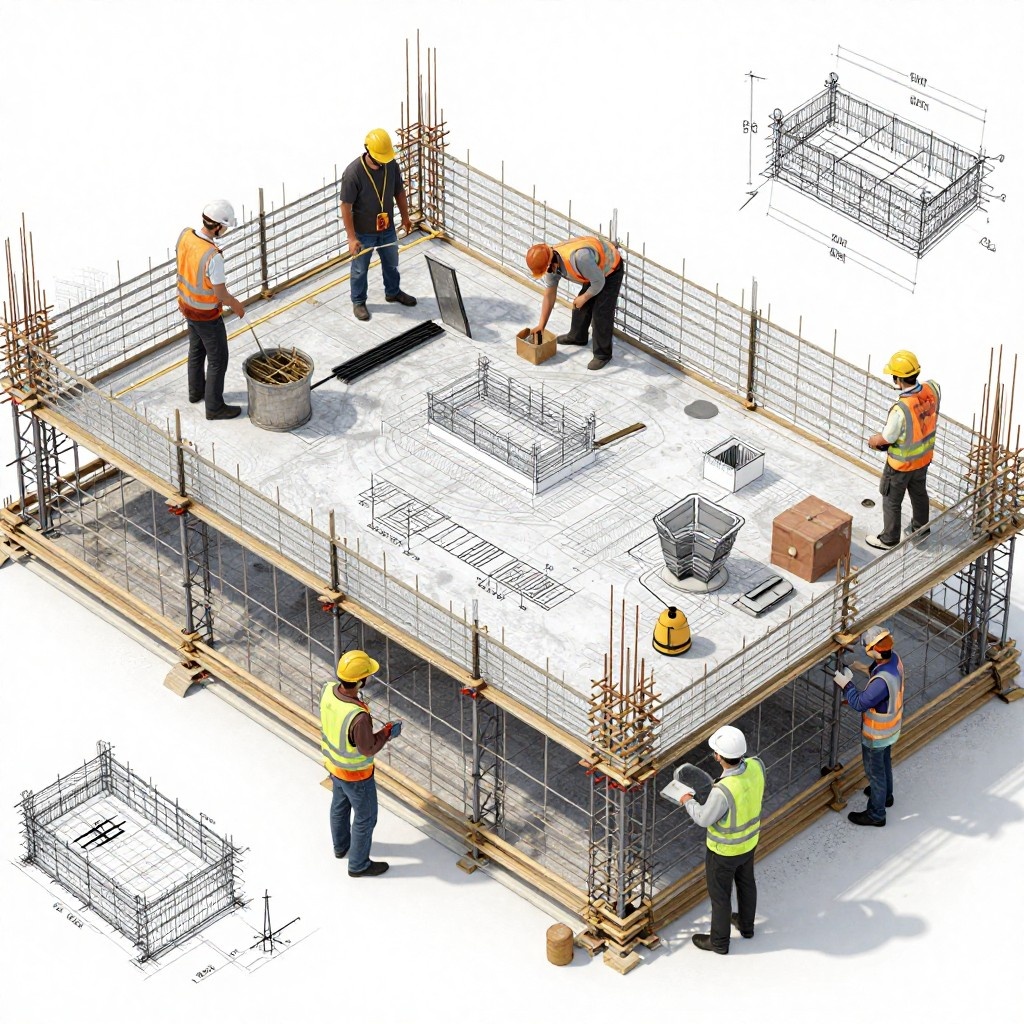As construction firms embrace robotics and automation, the industry is poised for a transformation. Mobile robots like Spot are not only improving data capture processes but also enhancing productivity and safety on construction sites. With their ability to navigate dynamic environments and collect real-time data, these robots are shaping the future of construction, paving the way for smarter, more efficient building practices.
Imagine a nimble, four-legged robot effortlessly navigating a construction site, maneuvering around obstacles, and autonomously collecting valuable data. Until recently, such a scenario would have seemed like science fiction. However, advancements in hardware and software technologies are turning this vision into reality, revolutionizing the construction industry.
Challenges of Traditional Robotics in Construction
Construction sites are dynamic environments, presenting numerous challenges for traditional wheeled or tracked robots. From floor gaps to moving equipment, these sites have historically posed insurmountable obstacles for conventional navigation algorithms. However, recent innovations are addressing these challenges head-on, paving the way for autonomous robots tailored specifically for construction environments.

Flexible Autonomy: The Key to Success
The latest wave of construction robots features legged designs, offering greater mobility and autonomy compared to their wheeled or tracked counterparts. These robots serve as autonomous data collection platforms, leveraging imaging, laser scanning, and other site data capture systems to provide construction managers with unprecedented insights into project progress and conditions.

Consistency: A Critical Factor in Data Capture
Consistency is essential for effective data capture on construction sites. Traditional methods often struggle to achieve the level of repeatability required for accurate analysis. However, robots excel in this regard, effortlessly performing repetitive tasks with precision and reliability. By capturing data consistently over time, robots enable construction managers to make better-informed decisions and optimize project outcomes.

Spotlight on Spot: Leading the Way
One robot at the forefront of this revolution is Spot, developed by Boston Dynamics. Equipped with advanced perception and autonomy capabilities, Spot can navigate dynamic terrain with unprecedented mobility. Its ability to adapt to changing environments and reroute itself on the fly makes it an invaluable asset on construction sites worldwide.
Overcoming Challenges with Flexible Autonomy
Quadrupedal robots built on flexible autonomy offer a solution to the unique challenges of construction sites. By combining hardware enhancements with dynamic path planning software, these robots can navigate complex environments with ease. Unlike traditional robots limited to single-path programs, robots with flexible autonomy can adapt to changing conditions and explore alternative routes to collect consistent data.
Autonomy that Works
Imagine a future where autonomous robots navigate construction sites with precision, capturing valuable data and performing tasks that were once reserved for human workers. This vision is becoming a reality with innovations like Spot, a versatile robotic platform developed by Boston Dynamics. Spot demonstrates the potential of autonomy in construction, seamlessly maneuvering through dynamic environments to automate tasks such as reality capture and site monitoring.

Integrated Robotic Scanning Solutions
Robots like Spot can be equipped with laser scanners, such as the Trimble X7, to collect highly accurate 3D data of construction sites in real-time. This integrated solution combines the benefits of mobility with autonomous scanning, enabling construction managers to make immediate decisions based on as-built conditions.
Site Progress Monitoring
One of the key applications of robotics in construction is site progress monitoring. With Spot's autonomous capabilities, it can capture 360° images and video, providing valuable insights into construction progress. These frequent snapshots can be integrated into construction documents and leveraged for automated analysis using emerging AI technologies. By automating the documentation process, Spot enhances efficiency and accuracy while reducing the burden on human workers.

Laser Scanning
In addition to image capture, Spot can be equipped with a laser scanner to collect precise 3D data on construction progress. By programming routine scanning routes, Spot facilitates the creation of detailed digital twins and Building Information Modeling (BIM) systems. This integration minimizes rework and ensures alignment between the digital model and the physical construction, optimizing project outcomes and reducing costs.

Remote Access
Spot's mobility and remote access capabilities make it an invaluable asset for construction projects in challenging or hazardous environments. By deploying Spot as a remote monitoring tool, construction firms can gain visibility into inaccessible sites and detect potential safety hazards in real-time. Spot's ability to navigate diverse terrains and environments enhances worker safety while enabling seamless data capture and analysis.
Setting up Success with Adaptability, Reliability, and Flexibility
Spot's agility, reliability, and adaptability are essential factors driving its success in the construction industry. Its ability to navigate obstacles and dynamically replan missions ensures that it can operate effectively in any construction environment. Moreover, Spot offers flexible communication options and easy mission setup, empowering construction teams to leverage its capabilities for diverse applications with minimal effort.
Spot on the Job
Real-world applications of Spot in construction highlight its versatility and impact across various workflows. From site progress monitoring to BIM model comparisons and digital twin creation, Spot facilitates data-driven decision-making and enhances project outcomes. Furthermore, Spot contributes to worker health and safety by automating tasks in hazardous environments, reducing the risk of accidents and injuries.
Conclusion
The integration of robotics and automation in the construction industry represents a paradigm shift towards a more efficient, safer, and sustainable future. Innovations like Spot demonstrate the transformative potential of robotics in streamlining construction processes, improving productivity, and enhancing project outcomes. As construction firms continue to embrace technology-driven solutions, the era of robotic construction heralds a new chapter in the evolution of the built environment, paving the way for smarter, more resilient infrastructure.
FAQs
What are the main benefits of robotics in construction?
Robotics in construction streamline processes, enhance efficiency, and improve safety. They enable precise data capture, reduce labor costs, and optimize project timelines. Additionally, robotic solutions promote sustainability by minimizing material wastage and optimizing resource utilization, leading to more eco-friendly construction practices.
Can robots take over construction?
While robots play an increasingly significant role in construction, they complement rather than replace human workers. Robots excel in repetitive tasks, enhancing productivity and safety. Human expertise remains essential for complex decision-making and tasks requiring creativity and adaptability, ensuring a collaborative approach to construction projects for optimal results.
How much does construction robotics cost?
The cost of construction robotics varies depending on factors like technology sophistication, functionality, and customization. Basic robotic solutions for tasks like site monitoring may start from a few thousand dollars, while advanced systems with integrated scanning capabilities can range into the tens of thousands. However, the long-term benefits in efficiency and productivity often justify the investment.
What are the disadvantages of construction robots?
Despite their numerous advantages, construction robots face limitations. Initial setup costs can be significant, and ongoing maintenance and software updates may incur additional expenses. Moreover, robots may encounter challenges in complex or unstructured environments, requiring human intervention. However, advancements continue to address these drawbacks, enhancing the effectiveness and versatility of construction robotics.
Can construction robots operate in all kinds of weather conditions and environments?
Construction robots are designed to operate in diverse weather conditions and environments. However, extreme weather conditions or complex terrains may pose challenges. Advanced robotics, like Spot, are engineered for adaptability and can navigate through rough terrain and inclement weather with minimal impact on performance, ensuring continued operation in varying conditions.




